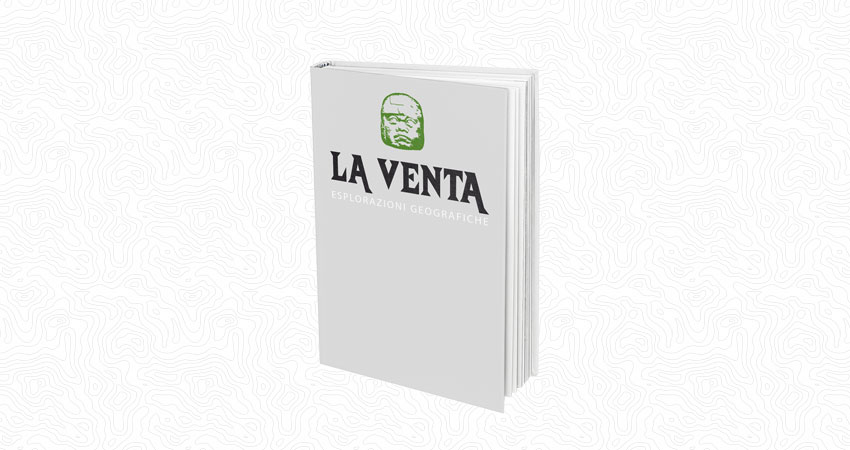A substantial part of the documentation activity of the La Venta association flows into prestigious volumes, published in different languages.
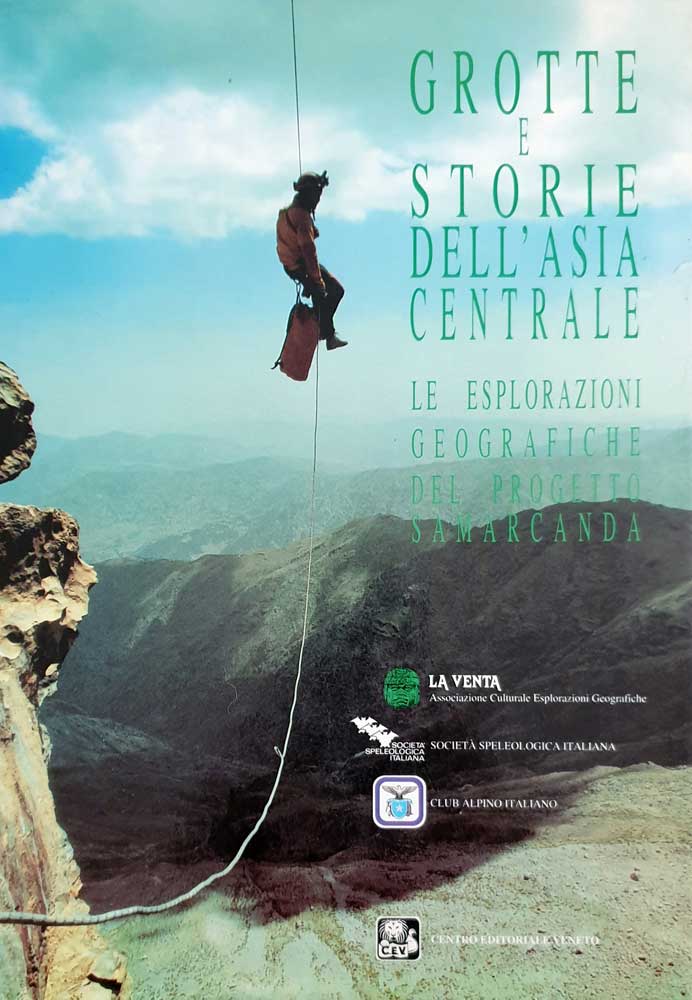
The first book came out in 1992, entitled "Caves and stories of Central Asia - The geographical explorations of the Samarkand Project", edited by Tullio Bernabei and Antonio De Vivo. This large-format volume (22x32 cm) summarizes the main exploratory and documentary results of the geographical explorations carried out during the Samarkand Project, carried out in the boundless karst territories of Pamiro Allaj, in Uzbekistan, between 1989 and 1991. Three hundred and ten hardcover pages, full of color photos, reliefs, compelling narratives and attached topographic map. The final part of the book consists of the full translation in English.
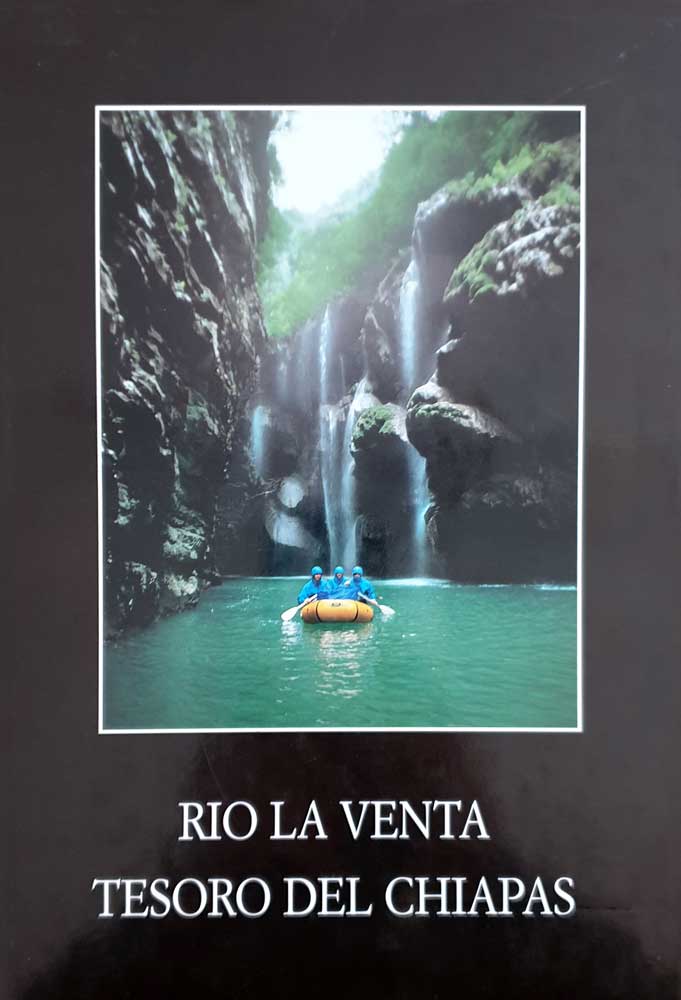
In 1999 the association published "Rio La Venta, Chiapas treasure", a successful volume that contains texts and contributions from numerous authors, Italian and Mexican. Rich in color photographs, and accompanied by an attached multimedia CD (the first speleological publication to make use of this system, absolutely innovative for those years), this book summarizes most of the exploratory, speleological, geographical and archaeological results of the complex Rio La Venta project, in the protected area of Selva El Ocote, born in 1993 with the winning of the Rolex Award for Enterprise. Three hundred and twenty pages in the 22x32 cm format with hard cover and jacket. The volume, edited by Giovanni Badino, Alvise Belotti, Tullio Bernabei, Antonio De Vivo, Davide Domenici and Italo Giulivo, is published in Italian, English, Spanish and French. Reference point for all those who work in the area, for work or study, the volume, in 2009, is reprinted in its Spanish version.
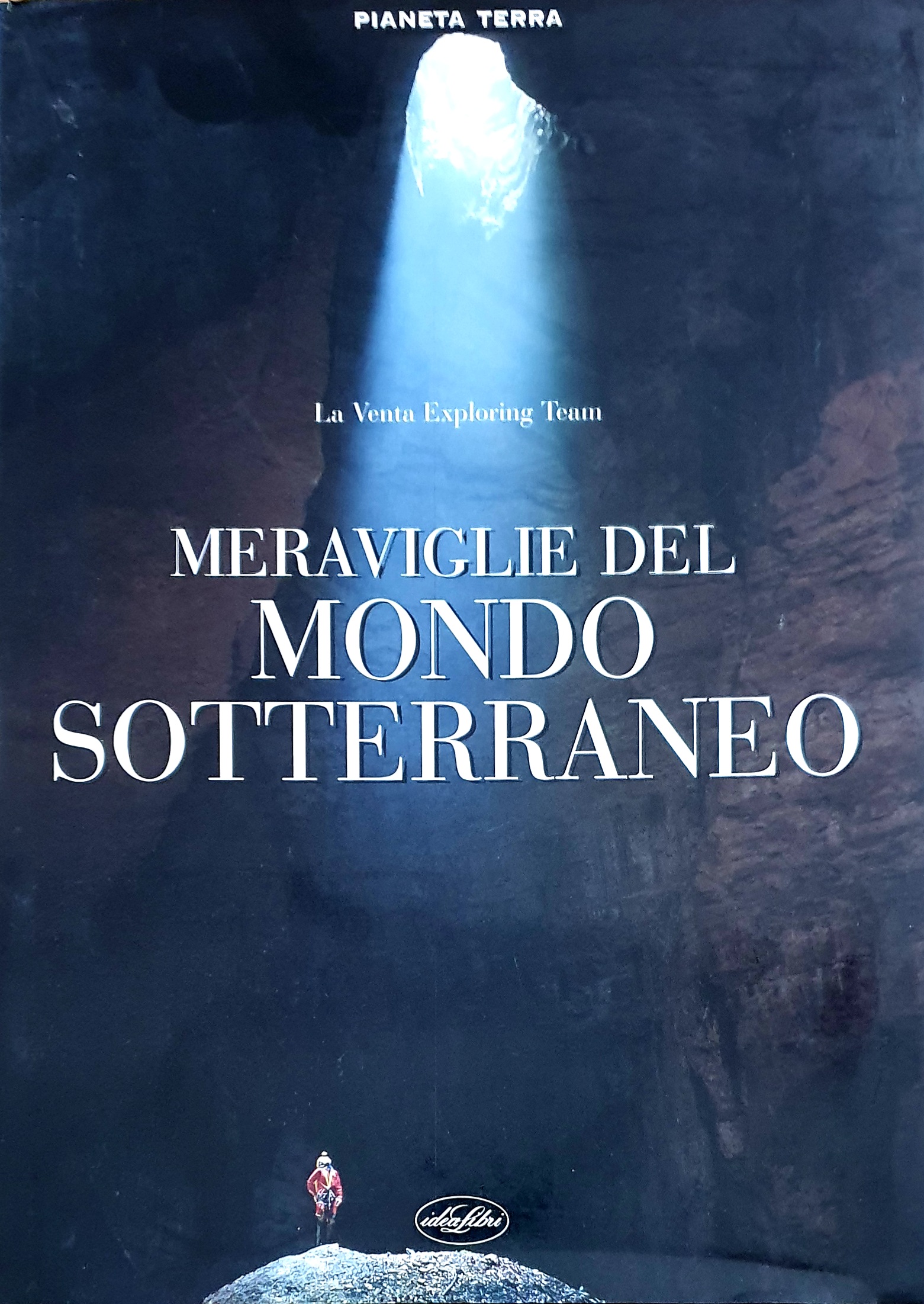
In 2003 La Venta published, for Idealibri, "Wonders of the underworld", 192 pages, Italian and French versions. Curators of the volume are Francesco Dal Cin and Antonio De Vivo, who for the first time attempt to build an image of the underground world thanks to the collaboration of photographers and speleologists from all over the world. Some of the most significant caves of each continent are thus described, with data on the main environmental characteristics and on the history of exploration.
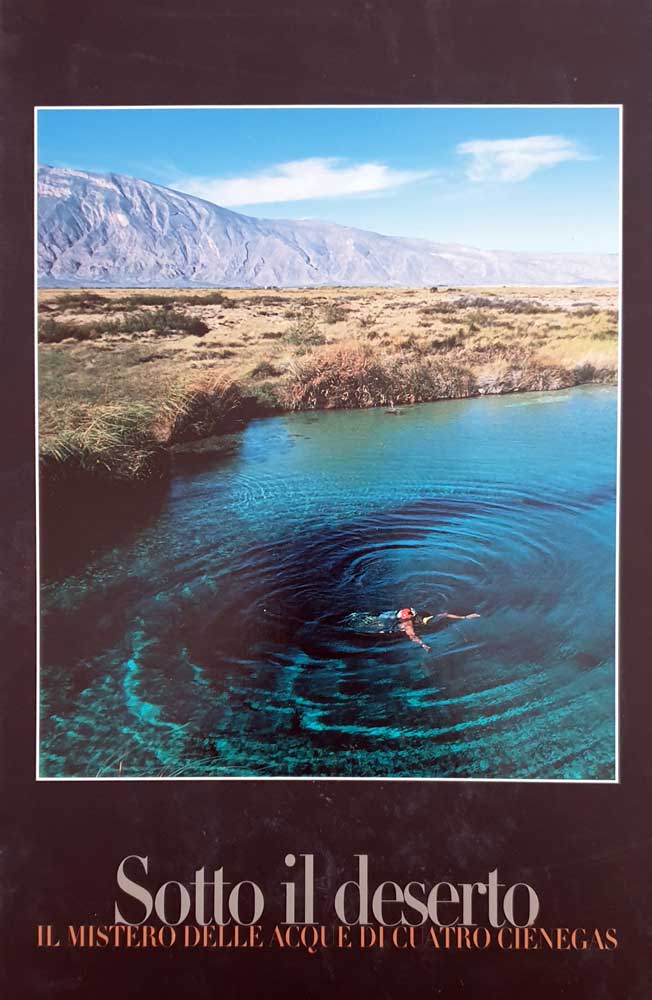
In 2004 it was the turn of "Under the desert, the mystery of the waters of Cuatro Ciénegas". The volume, published in Italian, Spanish and English, and edited by Giovanni Badino, Tullio Bernabei, Antonio De Vivo, Italo Giulivo and Giuseppe Savino, is composed of two hundred and eighty-five pages, hard cover and dust jacket, and is accompanied by a topographic map and a multimedia cd-rom that uses the most advanced technologies of the moment. The volume and the attached CD-ROM summarize the results of the three-year exploration campaign carried out in the Karst area of Cuatro Ciénegas, in the Mexican state of Coahuila, between 2000 and 2002, between spring pools, caves and abandoned mines.
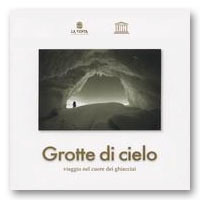
Also in 2004, "Caves of sky, a journey into the heart of the glaciers" came out, edited by Giovanni Badino, Antonio De Vivo and Leonardo Piccini. The book, published in Italian, English and Spanish, and sponsored by UNESCO for its importance from the ecological-environmental point of view, represents a unique also from the editorial point of view. It is in fact printed in tri-color: a technique that, halfway between black and white and four-color, offers an absolutely not obvious approach to images. Glaciers are the most ephemeral part of the landscape, the only fragments of geology capable of showing variations in the short time of a human life. On the other hand, they are formed by the accumulation of ancient snowfalls, and therefore they are the most evident and stable witness of the meteorological vicissitudes. A piece of sky that plows the mountains. It has been known for a long time that the rivers that flow over them sink into blue chasms, getting lost in the depths of the ice, but only recently the glaciospeleologists have learned to follow them, slowly reconstructing the complex internal structure of the glaciers. These caves, changing like clouds but at the same time stable forms, like whirlpools in a river, are of extraordinary beauty, abysses carved into a fragment of the sky. This book tells them. One hundred and fifty-six pages, hard cover, full of photos and insights.
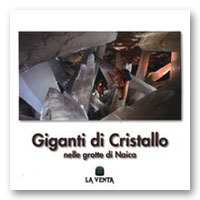
In 2008 he sees the prints "Crystal Giants", edited by Giovanni Badino. A forest of crystals, the largest on the planet. An unreal world beyond fantasy, beyond dreams. A cave at 50 ° temperature and 100% humidity, infernal, where man, without protection, can survive a few minutes. A wonder of Nature discovered by chance, extremely fragile and mysterious, which we could lose at any moment and which will soon return inaccessible, hidden in the heart of the Earth. La Cueva de los Cristales is a small window in the immensity of geological time, which man today has the good fortune to be able to open thanks to an innovative and exclusive technology. A high-risk "astronautics" exploration to understand, study, document and save. Before it's too late. Forty-eight pages, hardcover, full of color photos and insights. Published in two versions, Italian and English.
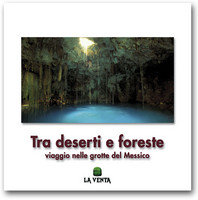 In 2009 La Venta published "Between Deserts and Forests - Journey into the caves of Mexico", edited by Corrado Conca, Antonio De Vivo, Leonardo Piccini, Giuseppe Savino, entirely dedicated to the explorations carried out by the association in this thousand-faceted country. There is a Mexico made up of magnificent beaches, snowy volcanoes, huge canyons, endless deserts; and there is another fact of cities lost in the forests, of immense buildings erected by past cultures. But there is still another, more hidden, which extends into the subsoil of certain deserts, of certain ruined cities, of certain canyons, and is its true hidden face: it is the Mexico of the caves. The astonishing landscape and cultural variety of this country is mirrored in its underground world, which includes some of the deepest caves in the world - over 1000 m -, others that are the largest ever explored underwater - over 200 km submerged -, others crossed by huge rivers, other vast and tropical, others unique from a biological point of view, other absolute "unicums", such as the Cueva de los Cristales. And to all this multifacetedness of the physical dimension of the caves, their archaeological interest often overlaps because, far from considering them infernal places, pre-Colombian cultures have included them in their religious and practical world, and have often transformed them into archaeological deposits, doors just ajar of immense archives of the past. The speleologists of our association have been dedicated to the explorations of these caves for over thirty years, and have gone to places that were generally far from not only tourism, but precisely from human attendance. And so they made very important archaeological explorations and discoveries, but above all they built many stories of interactions between men and the underworld that, in a sense, continue those of the ancients who in those dark places have left infinite traces. In this way, a complex fabric of stories and geographies has been formed, still unfinished: this book gives a first overall description. One hundred and fifty-six pages full of color photos, maps, reliefs, insights and narrations make this volume a reference text for all those who wish to undertake research work in Central America. Published in three versions, Italian, English and Spanish.
In 2009 La Venta published "Between Deserts and Forests - Journey into the caves of Mexico", edited by Corrado Conca, Antonio De Vivo, Leonardo Piccini, Giuseppe Savino, entirely dedicated to the explorations carried out by the association in this thousand-faceted country. There is a Mexico made up of magnificent beaches, snowy volcanoes, huge canyons, endless deserts; and there is another fact of cities lost in the forests, of immense buildings erected by past cultures. But there is still another, more hidden, which extends into the subsoil of certain deserts, of certain ruined cities, of certain canyons, and is its true hidden face: it is the Mexico of the caves. The astonishing landscape and cultural variety of this country is mirrored in its underground world, which includes some of the deepest caves in the world - over 1000 m -, others that are the largest ever explored underwater - over 200 km submerged -, others crossed by huge rivers, other vast and tropical, others unique from a biological point of view, other absolute "unicums", such as the Cueva de los Cristales. And to all this multifacetedness of the physical dimension of the caves, their archaeological interest often overlaps because, far from considering them infernal places, pre-Colombian cultures have included them in their religious and practical world, and have often transformed them into archaeological deposits, doors just ajar of immense archives of the past. The speleologists of our association have been dedicated to the explorations of these caves for over thirty years, and have gone to places that were generally far from not only tourism, but precisely from human attendance. And so they made very important archaeological explorations and discoveries, but above all they built many stories of interactions between men and the underworld that, in a sense, continue those of the ancients who in those dark places have left infinite traces. In this way, a complex fabric of stories and geographies has been formed, still unfinished: this book gives a first overall description. One hundred and fifty-six pages full of color photos, maps, reliefs, insights and narrations make this volume a reference text for all those who wish to undertake research work in Central America. Published in three versions, Italian, English and Spanish.
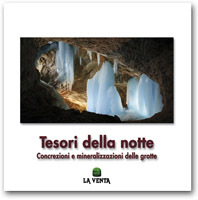 In 2010 the Association publishes "Treasures of the night - concretions and mineralization of the caves", edited by Paolo Forti. Published only in Italian, this volume explores the vast topic of cave mineralizations and crystallizations. Huge petrified waterfalls, delicate translucent fibers, perfect crystals of gigantic dimensions, but also so small that no human eye can see: a kaleidoscope of shapes that not even the most imaginative painter could have imagined. All this, and much more, is jealously guarded in the absolute darkness of the caves. The concretions and mineralizations are the most precious treasure of the natural cavities, not only for their undoubted aesthetic value and for their objective extreme rarity, but also and above all for their scientific importance: in fact, inside them, as in a book of stone, information is jealously preserved about a past even remote, which only in recent years have we begun to decipher. An enchanted but extremely fragile world, which risks being destroyed before having revealed all its mysteries to us. Sixty-four pages full of color photos and diagrams make this volume a reference text for all scholars and enthusiasts of mineralizations and underground concretions.
In 2010 the Association publishes "Treasures of the night - concretions and mineralization of the caves", edited by Paolo Forti. Published only in Italian, this volume explores the vast topic of cave mineralizations and crystallizations. Huge petrified waterfalls, delicate translucent fibers, perfect crystals of gigantic dimensions, but also so small that no human eye can see: a kaleidoscope of shapes that not even the most imaginative painter could have imagined. All this, and much more, is jealously guarded in the absolute darkness of the caves. The concretions and mineralizations are the most precious treasure of the natural cavities, not only for their undoubted aesthetic value and for their objective extreme rarity, but also and above all for their scientific importance: in fact, inside them, as in a book of stone, information is jealously preserved about a past even remote, which only in recent years have we begun to decipher. An enchanted but extremely fragile world, which risks being destroyed before having revealed all its mysteries to us. Sixty-four pages full of color photos and diagrams make this volume a reference text for all scholars and enthusiasts of mineralizations and underground concretions.
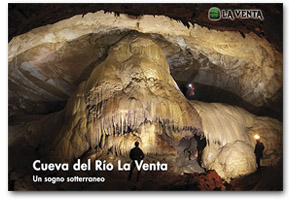 In 2011, “Cueva del Río La Venta, an underground dream” was published, edited by Tullio Bernabei, Antonio De Vivo, Francesco sauro and Giuseppe Savino. Published in three languages, Italian, English and Spanish, the volume represents the detailed description of a long exploration, that of one of Mexico's most important karst systems. The Cueva del Rio La Venta is a crossing cavity, over 14 kilometers long, which leads from the plateaus on the orographic left of the canyon to its bottom, 400 meters below. After almost twenty years of complex and arduous explorations, in 2009 La Venta decided to organize an expedition entirely dedicated to the photographic documentation of this extraordinary cave. From the point of view of the images, this book represents the fruit of that mission, and from the point of view of the texts the condensation of human experiences which have involved many dozens of people in twenty years. "Cueva del Rio la Venta: an underground dream" is on the one hand a fitting tribute to a wonder of Nature, on the other an invitation to get to know it: for speleologists, by going themselves to go along it; for the rest of the people, visiting it through the pages of the book. And we would also like all this to be a source of pride for the local, Chiapas and Mexican population, but also a stimulus to become aware of the need to conserve and protect the underworld. One hundred and sixty pages, hardcover, rich in images; the book also contains a 3D reconstruction of the cavity, one of the first examples of this type of graphic representation.
In 2011, “Cueva del Río La Venta, an underground dream” was published, edited by Tullio Bernabei, Antonio De Vivo, Francesco sauro and Giuseppe Savino. Published in three languages, Italian, English and Spanish, the volume represents the detailed description of a long exploration, that of one of Mexico's most important karst systems. The Cueva del Rio La Venta is a crossing cavity, over 14 kilometers long, which leads from the plateaus on the orographic left of the canyon to its bottom, 400 meters below. After almost twenty years of complex and arduous explorations, in 2009 La Venta decided to organize an expedition entirely dedicated to the photographic documentation of this extraordinary cave. From the point of view of the images, this book represents the fruit of that mission, and from the point of view of the texts the condensation of human experiences which have involved many dozens of people in twenty years. "Cueva del Rio la Venta: an underground dream" is on the one hand a fitting tribute to a wonder of Nature, on the other an invitation to get to know it: for speleologists, by going themselves to go along it; for the rest of the people, visiting it through the pages of the book. And we would also like all this to be a source of pride for the local, Chiapas and Mexican population, but also a stimulus to become aware of the need to conserve and protect the underworld. One hundred and sixty pages, hardcover, rich in images; the book also contains a 3D reconstruction of the cavity, one of the first examples of this type of graphic representation.
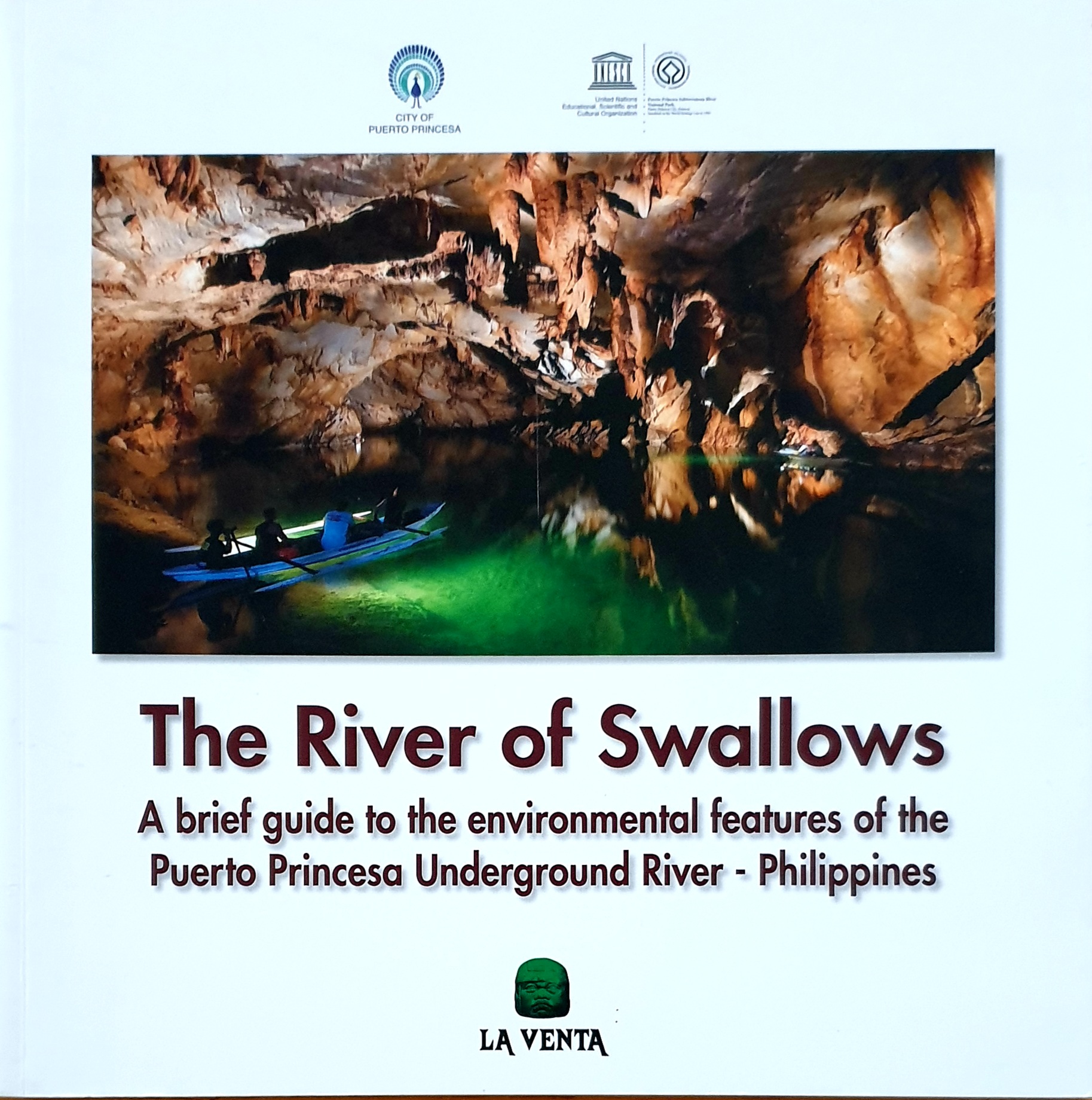 In 2013, in the English language only, “The River of Swallows. A brief guide to the environmental features of the Puerto Princesa Underground River", edited by Antonio De Vivo and Leonardo Piccini. Published in close collaboration with the authorities of Puerto Princesa and the Park, a UNESCO World Heritage Site, the volume offers, in its 90 pages, an overview of the main environmental characteristics of the cave which in 2011 was elected among the new natural wonders of the planet. Located on the west coast of the island of Palawan, in the Philippines, the PPUR represents a unique for its biological, mineralogical, geological and paleontological peculiarities.
In 2013, in the English language only, “The River of Swallows. A brief guide to the environmental features of the Puerto Princesa Underground River", edited by Antonio De Vivo and Leonardo Piccini. Published in close collaboration with the authorities of Puerto Princesa and the Park, a UNESCO World Heritage Site, the volume offers, in its 90 pages, an overview of the main environmental characteristics of the cave which in 2011 was elected among the new natural wonders of the planet. Located on the west coast of the island of Palawan, in the Philippines, the PPUR represents a unique for its biological, mineralogical, geological and paleontological peculiarities.
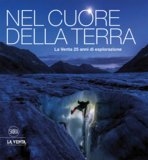 In 2017 SKIRA comes out "In the heart of the Earth - La Venta 25 years of exploration", edited by Antonio De Vivo and Francesco Sauro. Both winners of the Rolex Award for Enterprise, twenty years apart, with two of the main projects of the association, the two curators thus make up a temporal image of an internationally recognized geographical exploration team . The extraordinary adventure of the La Venta association: 25 years of expeditions to the most remote and unreachable places on the planet. 25 years of exploration through the main projects. From the first exploration with the descent of the Rio La Venta in Mexico, from which the association took its name, passing through the Tepui project in Venezuela, to the last, along the Puerto Princesa Underground River in the Philippines, still underway, these travel, of body and spirit, are told through spectacular images, compelling travel diaries, precise texts and scientific insights. Three hundred and twelve pages, hardcover, Italian and English versions.
In 2017 SKIRA comes out "In the heart of the Earth - La Venta 25 years of exploration", edited by Antonio De Vivo and Francesco Sauro. Both winners of the Rolex Award for Enterprise, twenty years apart, with two of the main projects of the association, the two curators thus make up a temporal image of an internationally recognized geographical exploration team . The extraordinary adventure of the La Venta association: 25 years of expeditions to the most remote and unreachable places on the planet. 25 years of exploration through the main projects. From the first exploration with the descent of the Rio La Venta in Mexico, from which the association took its name, passing through the Tepui project in Venezuela, to the last, along the Puerto Princesa Underground River in the Philippines, still underway, these travel, of body and spirit, are told through spectacular images, compelling travel diaries, precise texts and scientific insights. Three hundred and twelve pages, hardcover, Italian and English versions.
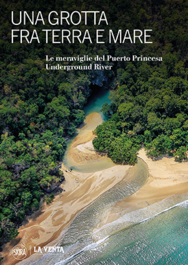 Finally in 2018, again for SKIRA, "A cave between land and sea - The wonders of the Puerto Princesa Underground River", edited by Antonio De Vivo, Paolo Forti, Leonardo Piccini, Natalino Russo. As with "The River of Swallows", the research site is the island of Palawan in the Philippines. Over twenty years and many expeditions have allowed us to make dream explorations in an incredible place. The Puerto Princesa Underground River has carved colossal tunnels into the mountain: it crosses it for miles and then flows into the South China Sea with a large estuary. In the darkness of this cave live hundreds of thousands of bats and swallows, which contribute to creating a unique ecosystem in the world. Also thanks to our discoveries, this cave has been included among the new seven natural wonders of the planet. Finally all this work sees the light in a great book, published in Italian and English. With narrative cutting, diaries, stories and splendid images, the volume illustrates the history of explorations, geological and biological research on the cave and on the karst area. Two hundred twenty-four pages, hard cover.
Finally in 2018, again for SKIRA, "A cave between land and sea - The wonders of the Puerto Princesa Underground River", edited by Antonio De Vivo, Paolo Forti, Leonardo Piccini, Natalino Russo. As with "The River of Swallows", the research site is the island of Palawan in the Philippines. Over twenty years and many expeditions have allowed us to make dream explorations in an incredible place. The Puerto Princesa Underground River has carved colossal tunnels into the mountain: it crosses it for miles and then flows into the South China Sea with a large estuary. In the darkness of this cave live hundreds of thousands of bats and swallows, which contribute to creating a unique ecosystem in the world. Also thanks to our discoveries, this cave has been included among the new seven natural wonders of the planet. Finally all this work sees the light in a great book, published in Italian and English. With narrative cutting, diaries, stories and splendid images, the volume illustrates the history of explorations, geological and biological research on the cave and on the karst area. Two hundred twenty-four pages, hard cover.
PDF available for reading:
Grotte e storie dell'Asia Centrale Italiano e Inglese
Rio La Venta Italiano Spagnolo
Grotte di cielo Italiano Inglese Spagnolo
Giganti di cristallo Italiano Inglese
Tra deserti e foreste Italiano Inglese Spagnolo
Tesori della notte Italiano
Cueva del Rio la Venta Italiano Inglese Spagnolo
The river of swallows Inglese



